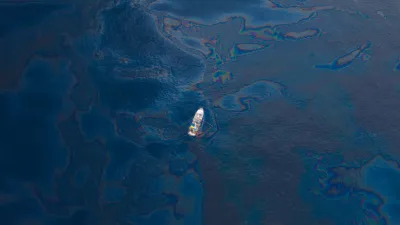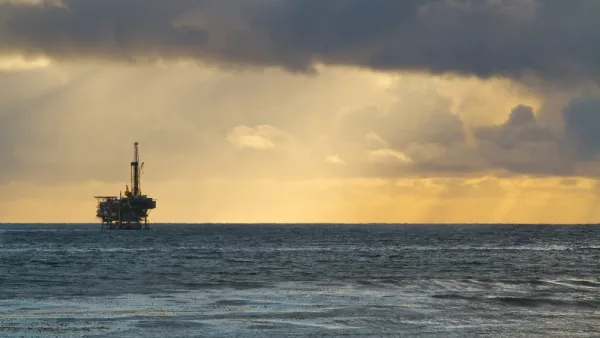Mark Hertsgaard examines the effort undertaken by BP to cover up the 2010 Gulf of Mexico oil spill. The focus of his story is the company's use of Corexit, a dangerous 'dispersant' that sickened many and helped conceal the true extent of the spill.

For 87 agonizing days during the spring and summer of 2010, “the worst environmental disaster in American history” released torrents of Louisiana sweet crude from the Macondo well into the Gulf of Mexico. "Yet three years later, the BP disaster has been largely forgotten, both overseas and in the U.S.," says Hertsgaard. "Popular anger has cooled. The media have moved on."
"Such collective amnesia may seem surprising, but there may be a good explanation for it: BP mounted a cover-up that concealed the full extent of its crimes from public view. This cover-up prevented the media and therefore the public from knowing—and above all, seeing—just how much oil was gushing into the gulf. The disaster appeared much less extensive and destructive than it actually was."
Hertsgaard focuses on BP's use of Corexit, the “dispersant” substance used to break up the oil, which is thought to have sickened hundreds of cleanup workers and local residents, damaged gulf wildlife and ecosystems, and helped conceal the true extent of the disaster.
FULL STORY: What BP Doesn’t Want You to Know About the 2010 Gulf Spill

Analysis: Cybertruck Fatality Rate Far Exceeds That of Ford Pinto
The Tesla Cybertruck was recalled seven times last year.

National Parks Layoffs Will Cause Communities to Lose Billions
Thousands of essential park workers were laid off this week, just before the busy spring break season.

Retro-silient?: America’s First “Eco-burb,” The Woodlands Turns 50
A master-planned community north of Houston offers lessons on green infrastructure and resilient design, but falls short of its founder’s lofty affordability and walkability goals.

Test News Post 1
This is a summary

Analysis: Cybertruck Fatality Rate Far Exceeds That of Ford Pinto
The Tesla Cybertruck was recalled seven times last year.

Test News Headline 46
Test for the image on the front page.
Urban Design for Planners 1: Software Tools
This six-course series explores essential urban design concepts using open source software and equips planners with the tools they need to participate fully in the urban design process.
Planning for Universal Design
Learn the tools for implementing Universal Design in planning regulations.
EMC Planning Group, Inc.
Planetizen
Planetizen
Mpact (formerly Rail~Volution)
Great Falls Development Authority, Inc.
HUDs Office of Policy Development and Research
NYU Wagner Graduate School of Public Service



























